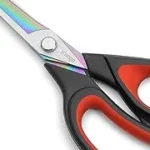Crab legs have long been considered a delicacy, adored by seafood enthusiasts around the world. However, one question that often arises is why these delectable crustacean limbs come with such a hefty price tag. The answer lies in a combination of factors, including the labor-intensive process of catching and preparing crab legs, the limited availability of certain species, and the high demand for this succulent seafood. In this article, we will explore the reasons behind the expensive nature of crab legs and shed light on why they are often considered a luxury item.
When you think of crab legs, you may envision platters overflowing with mouthwatering clusters of succulent meat, but have you ever stopped to consider the journey these delectable delicacies take to reach your plate? The process of harvesting crab legs is not for the faint of heart. Experienced fishermen brave treacherous waters, battling the elements to trap these elusive creatures. Once caught, the crabs undergo meticulous cleaning, cooking, and packaging processes, which require skilled hands and significant labor. This labor-intensive process inevitably drives up the cost of crab legs, making them a premium seafood choice.
Adding to the expense is the limited availability of certain crab species. Different types of crabs, such as king crabs or snow crabs, have varying levels of abundance in the wild. Some species are rarer, harder to catch, or face restrictions due to sustainability concerns. As a result, the supply of these crabs is more limited compared to other seafood options, leading to higher prices in the market. The exclusivity and rarity associated with certain crab species contribute to their elevated cost, making them a luxury indulgence for seafood lovers.
In addition to the challenges of catching and scarcity, the demand for crab legs plays a significant role in their expensive price point. Crab legs have become a sought-after culinary delight, enjoyed in high-end restaurants and homes alike. As more people develop a taste for this exquisite seafood, the demand for crab legs continues to rise. However, with limited supply and production capabilities, meeting this growing demand becomes a challenge. As a result, the market price of crab legs remains steep, reflecting their status as a prized and exclusive treat.
In conclusion, the high cost of crab legs can be attributed to various factors, including the labor-intensive process of harvesting and preparing them, the limited availability of certain species, and the increasing demand for this delectable seafood. As you savor every succulent bite of crab legs, remember that their price reflects the dedication and skill required to bring them from the ocean floor to your table, making them a truly special delicacy worth the investment.
Crab legs are expensive due to various factors. One reason is the high demand for them, especially in seafood-loving regions. Another factor is the limited supply, as crabs are not as abundant as other seafood species. Additionally, the cost of catching, processing, and transporting crabs also adds to the overall price. Lastly, the quality and size of the crab legs can impact their price as well.
Why are crab legs so expensive?
Crab legs are considered a delicacy and are often priced higher compared to other types of seafood. Several factors contribute to the high cost of crab legs:
1. Limited supply: Crabs are not as abundant as other seafood, and certain species are caught in specific regions. This limited supply drives up the price due to high demand and the costs associated with sourcing and transporting them.
2. Labor-intensive process: Harvesting crab legs involves skilled labor and can be dangerous. Fishermen have to navigate treacherous waters, set traps or pots, and carefully handle the crabs to avoid injury. The high labor costs associated with catching crabs contribute to the overall expense.
Are crab legs expensive due to their popularity?
Yes, the popularity of crab legs also plays a significant role in their high cost. Crab legs are highly sought after for their sweet and succulent meat. They are commonly served in high-end restaurants, seafood buffets, and special occasions, making them a symbol of luxury and indulgence.
The demand for crab legs, especially during peak seasons, such as holidays and special events, drives up the price. Many people are willing to pay a premium to enjoy the unique flavor and texture that crab legs offer.
Why are Alaskan king crab legs so expensive?
Alaskan king crab legs are known for their exceptional size, flavor, and texture, which contribute to their high cost. Several factors make Alaskan king crab legs more expensive compared to other types of crab legs:
1. Limited availability: Alaskan king crabs are primarily harvested from the Bering Sea and the Gulf of Alaska. The extreme weather conditions and remote locations where they are found make the harvesting process challenging and dangerous, resulting in limited supply and higher costs.
2. Size and quality: Alaskan king crab legs are renowned for their large size and the high meat-to-shell ratio. The larger the crab legs, the more valuable they are. The exceptional quality and meatiness of Alaskan king crab legs contribute to their premium price.
Why are snow crab legs so expensive?
Snow crab legs are priced higher compared to other types of seafood due to several reasons:
1. Limited availability: Snow crabs are primarily found in the cold waters of the Northern Atlantic and Northern Pacific oceans. The regions where they are harvested are often remote and difficult to access, making the process of catching them more challenging and expensive.
2. High demand: Snow crab legs are highly sought after for their delicate and sweet meat. They are commonly used in various seafood dishes and are particularly popular during certain times of the year, such as holidays and special occasions. The high demand for snow crab legs drives up the price.
Why are Dungeness crab legs so expensive?
Dungeness crab legs are considered a delicacy and are priced higher due to several factors:
1. Limited supply: Dungeness crabs are primarily found along the Pacific coast of North America, from Alaska to California. The catch of Dungeness crabs is regulated to maintain sustainable populations, resulting in a limited supply. This limited availability contributes to their higher cost.
2. Labor-intensive process: Harvesting Dungeness crabs involves skilled labor and specialized equipment. Fishermen have to set traps, haul in the traps, sort the catch, and carefully handle the crabs to avoid injury. The labor-intensive process adds to the overall expense of Dungeness crab legs.
Why are blue crab legs so expensive?
Blue crab legs are considered a delicacy and are priced higher compared to other types of crab legs due to several reasons:
1. Limited availability: Blue crabs are primarily found along the Eastern and Gulf coasts of the United States. The catch of blue crabs is regulated to ensure sustainable populations, resulting in a limited supply. The limited availability drives up the price.
2. Labor and time-intensive process: Harvesting blue crabs involves skilled labor and time-consuming methods. Fishermen typically use traps or trotlines to catch blue crabs, and the process of setting, checking, and collecting the traps is labor-intensive. The labor and time required contribute to the higher cost of blue crab legs.
Why are Jonah crab legs so expensive?
Jonah crab legs are priced higher compared to other types of crab legs due to several factors:
1. Limited availability: Jonah crabs are primarily found along the Eastern coast of North America, from Nova Scotia to Florida. While they are not as widely known as other types of crabs, Jonah crabs are highly sought after for their sweet and tender meat. The limited availability contributes to their higher cost.
2. Harvesting challenges: Jonah crabs are typically caught using traps or pots, similar to other types of crabs. However, their smaller size and elusive nature make them more challenging to catch, resulting in increased labor and time costs. The challenges associated with harvesting Jonah crabs contribute to the overall expense of their legs.
Why are stone crab claws so expensive?
Stone crab claws are priced higher compared to other types of crab legs due to several reasons:
1. Limited availability: Stone crabs are primarily found in the warm waters of the Gulf of Mexico and the Atlantic coast of Florida. The catch of stone crabs is regulated to ensure sustainability, resulting in a limited supply. The limited availability drives up the price of their claws.
2. One-claw harvesting: Stone crabs are unique as only one claw is harvested, and the crab is then returned to the water. This sustainable harvesting practice ensures the continued growth and survival of the crabs but also increases the cost, as only one claw is available for commercial sale.
Why are red crab legs so expensive?
Red crab legs, also known as red king crab legs, are priced higher compared to other types of crab legs due to several factors:
1. Limited availability: Red king crabs are primarily found in the Bering Sea and the Gulf of Alaska. The catch of red king crabs is regulated to maintain sustainable populations, resulting in a limited supply. The limited availability drives up the price of their legs.
2. Large size and high meat quality: Red king crabs are known for their large size and the high meat-to-shell ratio. The larger the crab legs, the more valuable they are. The exceptional quality and meatiness of red king crab legs contribute to their premium price.
Why are spider crab legs so expensive?
Spider crab legs, also known as Japanese spider crab legs, are priced higher compared to other types of crab legs due to several reasons:
1. Limited availability: Spider crabs are primarily found in the waters around Japan and the Sea of Japan. Catching spider crabs requires specialized knowledge and equipment, making the process more challenging and expensive. The limited availability of spider crabs drives up the price of their legs.
2. Exceptional size and rarity: Japanese spider crabs are known for their impressive size, with a leg span that can reach up to 12 feet. Their large size, coupled with their rarity, contributes to their higher cost. Spider crab legs are considered a delicacy in Japanese cuisine and are highly sought after.
Why are soft shell crab legs so expensive?
Soft shell crab legs are priced higher compared to other types of crab legs due to several factors:
1. Harvesting challenges: Soft shell crabs are crabs that have recently molted and shed their hard exoskeleton. Harvesting soft shell crabs requires careful timing and monitoring to ensure that the crabs are caught during this brief molting period. The challenges associated with harvesting soft shell crabs contribute to their higher cost.
2. Delicate texture and unique flavor: Soft shell crabs are highly valued for their tender texture and delicate flavor. They are commonly used in various culinary dishes, especially in Asian cuisine. The unique characteristics and culinary versatility of soft shell crab legs contribute to their premium price.
Why are snow crab legs more expensive than king crab legs?
Snow crab legs are often priced higher compared to king crab legs due to several reasons:
1. Availability: Snow crabs are typically more abundant compared to king crabs, which are harvested in limited quantities. The higher availability of snow crabs helps keep the prices relatively lower than those of king crab legs.
2. Size and quality: King crab legs are known for their larger size and meatier texture compared to snow crab legs. The larger size and exceptional quality of king crab legs contribute to their higher cost.
Why are crab legs expensive even though they are seafood?
Despite being seafood, crab legs are relatively expensive due to several factors:
1. Limited supply: Crabs are not as abundant as other types of seafood, and certain species are caught in specific regions. The limited supply drives up the price due to high demand and the costs associated with sourcing and transporting them.
2. Harvesting challenges: Catching crabs and harvesting their legs can be labor-intensive and dangerous. Fishermen have to navigate treacherous waters, set traps or pots, and carefully handle the crabs to avoid injury. The high labor costs associated with catching crabs contribute to the overall expense.
Why are crab legs more expensive than lobster tails?
Crab legs are often priced higher compared to lobster tails due to several reasons:
1. Limited availability: Crabs are not as abundant as lobsters, and certain species are caught in specific regions. The limited supply of crabs drives up the price due to high demand and the costs associated with sourcing and transporting them.
2. Labor-intensive process: Harvesting crab legs involves skilled labor and can be dangerous. Fishermen have to navigate treacherous waters, set traps or pots, and carefully handle the crabs to avoid injury. The high labor costs associated with catching crabs contribute to the overall expense.
Why are crab legs more expensive than shrimp?
Crab legs are often priced higher compared to shrimp due to several reasons:
1. Limited supply: Crabs are not as abundant as shrimp, and certain species are caught in specific regions. The limited supply drives up the price due to high demand and the costs associated with sourcing and transporting them.
2. Harvesting challenges: Catching crabs and harvesting their legs can be labor-intensive and dangerous. Fishermen have to navigate treacherous waters, set traps or pots, and carefully handle the crabs to avoid injury. The high labor costs associated with catching crabs contribute to the overall expense.
Why are crab legs more expensive than scallops?
Crab legs are often priced higher compared to scallops due to several reasons:
1. Limited supply: Crabs are not as abundant as scallops, and certain species are caught in specific regions. The limited supply drives up the price due to high demand and the costs associated with sourcing and transporting them.
2. Harvesting challenges: Catching crabs and harvesting their legs can be labor-intensive and dangerous. Fishermen have to navigate treacherous waters, set traps or pots, and carefully handle the crabs to avoid injury. The high labor costs associated with catching crabs contribute to the overall expense.
Why are crab legs more expensive than fish?
Crab legs are often priced higher compared to fish due to several reasons:
1. Limited supply: Crabs are not as abundant as fish, and certain species are caught in specific regions. The limited supply drives up the price due to high demand and the costs associated with sourcing and transporting them.
2. Harvesting challenges: Catching crabs and harvesting their legs can be labor-intensive and dangerous. Fishermen have to navigate treacherous waters, set traps or pots, and carefully handle the crabs to avoid injury. The high labor costs associated with catching crabs contribute to the overall expense.
Why are crab legs more expensive than mussels?
Crab legs are often priced higher compared to mussels due to several reasons:
1. Limited supply: Crabs are not as abundant as mussels, and certain species are caught in specific regions. The limited supply drives up the price due to high demand and the costs associated with sourcing and transporting them.
2. Harvesting challenges: Catching crabs and harvesting their legs can be labor-intensive and dangerous. Fishermen have to navigate treacherous waters, set traps or pots, and carefully handle the crabs to avoid injury. The high labor costs associated with catching crabs contribute to the overall expense.
Why are crab legs more expensive than oysters?
Crab legs are often priced higher compared to oysters due to several reasons:
1. Limited supply: Crabs are not as abundant as oysters, and certain species are caught in specific regions. The limited supply drives up the price due to high demand and the costs associated with sourcing and transporting them.
2. Harvesting challenges: Catching crabs and harvesting their legs can be labor-intensive and dangerous. Fishermen have to navigate treacherous waters, set traps or pots, and carefully handle the crabs to avoid injury. The high labor costs associated with catching crabs contribute to the overall expense.
Why are crab legs more expensive than clams?
Crab legs are often priced higher compared to clams due to several reasons:
1. Limited supply: Crabs are not as abundant as clams, and certain species are caught in specific regions. The limited supply drives up the price due to high demand and the costs associated with sourcing and transporting them.
2. Harvesting challenges: Catching crabs and harvesting their legs can be labor-intensive and dangerous. Fishermen have to navigate treacherous waters, set traps or pots, and carefully handle the crabs to avoid injury. The high labor costs associated with catching crabs contribute to the overall expense.
Why are crab legs more expensive than octopus?
Crab legs are often priced higher compared to octopus due to several reasons:
1. Limited supply: Crabs are not as abundant as octopus, and certain species are caught in specific regions. The limited supply drives up the price due to high demand and the costs associated with sourcing and transporting them.
2. Harvesting challenges: Catching crabs and harvesting their legs can be labor-intensive and dangerous. Fishermen have to navigate treacherous waters, set traps or pots, and carefully handle the crabs to avoid injury. The high labor costs associated with catching crabs contribute to the overall expense.
Why are crab legs more expensive than squid?
Crab legs are often priced higher compared to squid due to several reasons:
1. Limited supply: Crabs are not as abundant as squid, and certain species are caught in specific regions. The limited supply drives up the price due to high demand and the costs associated with sourcing and transporting them.
2. Harvesting challenges: Catching crabs and harvesting their legs can be labor-intensive and dangerous. Fishermen have to navigate treacherous waters, set traps or pots, and carefully handle the crabs to avoid injury. The high labor costs associated with catching crabs contribute to the overall expense.
Why Stone Crab Claws Are So Expensive | So Expensive
In conclusion, the high price of crab legs can be attributed to several factors. Firstly, the scarcity of crabs plays a significant role in driving up their cost. Crabs are not as abundant as other seafood options, making them more difficult to catch and harvest. This limited supply naturally leads to higher prices in the market.
Secondly, the process of catching and transporting crabs adds to their overall expense. Crab fishing is a labor-intensive and time-consuming activity that requires skilled fishermen and specialized equipment. Additionally, crabs are delicate creatures that need to be handled with care during transportation to ensure their freshness and quality. These factors contribute to the higher costs associated with crab legs.
Lastly, the demand for crab legs is another contributing factor to their expensive price tag. Crab meat is highly sought after for its distinct flavor and tender texture, making it a popular choice among seafood enthusiasts. This high demand, coupled with the limited supply, creates a competitive market where prices can soar.
In conclusion, the combination of scarcity, labor-intensity, and high demand all contribute to the expensive nature of crab legs. While they may be a delicacy worth splurging on for some, the price reflects the unique qualities and challenges associated with obtaining this delectable seafood.






